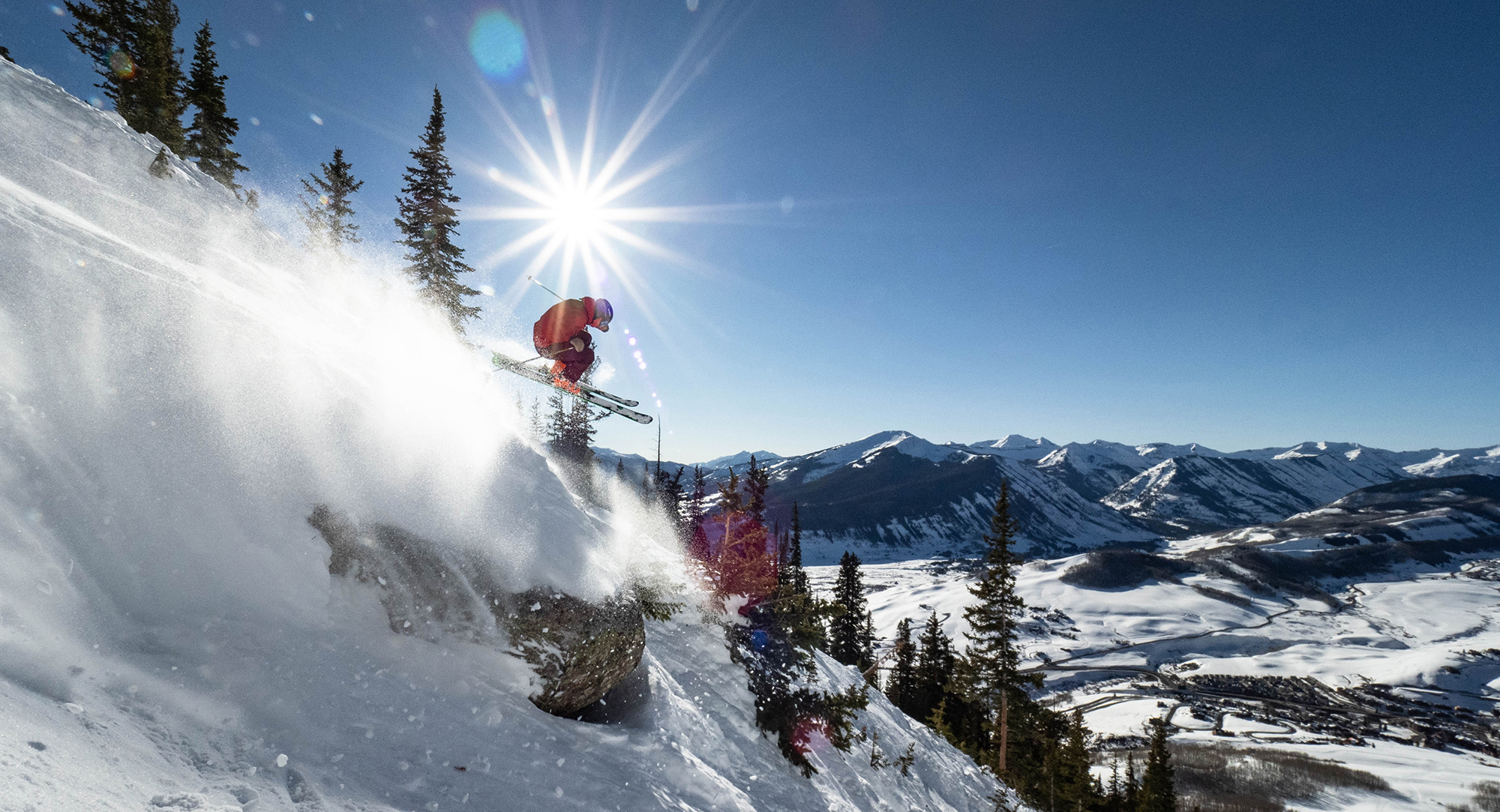Today we are very pleased to announce a historic new venture in the outdoor industry, Blister Labs.
Blister Labs is a new partnership between BLISTER, the University of Colorado Boulder, and the brand-new, state-of-the-art engineering facility at Western Colorado University in Gunnison, Colorado.
Over the past 10 years at Blister, we have worked hard to raise the bar for gear testing in the outdoor industry. And we are now raising the bar again through Blister Labs.
The aim of Blister Labs will be to answer some of the big questions in the outdoor industry, such as: are those expensive mountain bike wheelsets really worth the extra cash you spend on them? To what extent might the outdoor industry’s move away from fluorocarbons (for good environmental reasons) hinder the performance of waterproof apparel? And how do the real-world damping properties of different skis compare?
At Blister, we have focused primarily on long-term qualitative testing of skis, bikes, running shoes, technical apparel, etc.

With Blister Labs, we are now working with high-level engineering faculty and their students to marry our qualitative experience on the mountain and on the trail to quantitative analysis in the laboratory at the Paul M. Rady School of Computer Science and Engineering at Western Colorado University, and also on the mountain via sophisticated dynamic modeling.

As a result, people from all around the world that are passionate about the outdoors will have unprecedented access to new tests and data from an independent party to help them better understand what they are — and what they aren’t — getting if they spend their money on expensive bike parts, technical apparel, and ski equipment.
Among the tests we will be conducting:
- Comparing durability and stiffness of bike wheels at a wide range of price points and weights
- Producing new, more consumer-friendly apparel ratings for water resistance and breathability
- Working to standardize the flex ratings of ski boots, since no universal standard currently exists
We will be talking about the development and progress of these tests on the Blister website and on regular ‘Blister Labs’ episodes of our GEAR:30 podcast, in addition to baking our Lab results into our product reviews and our Blister Buyer’s Guides.
We will also be bringing engineers and designers from across the outdoor industry to Western Colorado University to meet with students, faculty, and Blister reviewers about their current product testing and potential ways to improve that testing.
Above all, our intention is to (a) maximize the real-world relevance of our Blister Labs’ tests, and (b) communicate our findings in a way that is clear and meaningful to consumers around the world.

Wow this is really a cool development, can’t wait to see how this evolves. Congratulations for making it happen
Super rad. Excited to read/listen/learn about the results of some of this testing!
Would be very cool to see a flex resistance curve plotted throughout a boots ROM. Would be way more helpful than just a 130 flex value.
Can’t wait to see and read about the boot stiffness testing. Amazing
This is sick! Very excited about the ski boot testing
Super awesome, love the ambitions. I’d be interested to hear more about what problems you see/want to resolve with MVTR/CFM/HH ratings. They are admittedly not very consumer friendly (and it’s disappointing how few companies openly post their numbers), but once you do a little research and develop some real world experience with how those numbers impact performance they allow for a pretty decent amount of precision in gear selection. Hopefully consumer friendliness doesn’t come at the cost of that precision (ex: it would be disappointing to see 20 and 40 CFM be grouped into the same general category of “medium” just to make it easier to communicate). I’m excited to see new quantitative tests drive competition and not let companies get away with marketing lackluster products as “breathable”. Thanks for the awesome project!
Interesting move Blister! Tour Magazin in Germany has been doing quantitative lab testing of road bikes & framesets for over 25 years now. It has been interesting how they’ve revised their testing methodology and scoring parameters over the years in an attempt to really home-in on the factors are most relevant to real world performance. One important lesson they learned the hard way: don’t just put stiffness numbers on a pedestal. Tour’s first decade of testing was all about their STW values (stiffness to weight). A bike that could win Tour’s annual STW ranking sold like hotcakes. The success of Canyon as a brand is built in large part on their engineers designing bikes that targeted and won Tour’s testing parameters year after year. It took a long time for Tour to figure out how to contextualize stiffness numbers as part of the big picture of overall performance, e.g. by creating new tests to quantify comfort and compliance. We know Blister has mastered the art of qualitative field testing, but it may be worthwhile to look back at the history of Tour’s quantitative testing efforts to learn from their current approach and past mistakes!
Wait – Damping or dampening? Lol just reminded me of some fun blister debates from a few years ago.
Cool stuff and nice to see the growth at blister.
wow! of all the great/cool things y’all have done, including starting Blister, THIS is the most amazing. Jonathan, this has got to be so validating and exciting! i am really happy for you and your great staff (and for all us gear junkies…).
more than ever, thank you for your great work!
I CANNOT WAIT for the the ski boot stiffness testing! It will be so good to finally see degrees of flex vs force curves to compare flex numbers and linear/progressive feel. If it leads to an industry-wide standard, even better!
Wow, this is really amazing! A very welcome development to really break through company marketing hype and objectively compare products. Excited to see what you guys do.
Another amazing Blister innovation. Jonathan and CO, you are true trailblazers, proud to be a member.
CONGRATULATIONS! You do a great job and this news show how committed you are to further improve. I am excited about this project and am really looking forward to see the first results. Bringing together your passion, experience and engineering analysis and technics. Thank you for your passion, commitment and drive for improvements. I really appreciate it. Wishing you A LOT OF SUCCESS AND ENJOYMENT! Sincerely, David
This seems like it should be an April 1 post. “Blister Has Invested in State of the Art Gas Chromatograph–Mass Spectroscopy Technology for New Quantitative Analysis of Ski Composition”
Great initiative! Manufacturers, retailers and customers are all potential winners from the testing and analysis coming out of the lab. I was wondering if consideration has been made to partner with companies like Skeo and Carv to access data produced from this tech? Given that they use boot sole sensors I reckon that a lot of good data can be gathered to build up some good ski and boot data to not only improve equipment targeting by skill level but also provide a broader comparative statistical data base for those companies to refine their product for their customers. Of course I am might have grabbed the wrong end of the stick in making these comments however it seems to me like there are multiple opportunities for win-win outcomes for all parties. What are your thoughts?
This could be a really cool opportunity to “science” the heck out of things rather than rely on marketing or whatever. Great idea. Would like to suggest the idea of deep dive safety testing/statistics for things like ski bindings or helmets. For example are Look Pivots really safer than my Shifts? If so, by how much and in what ways? Or maybe do some deep statistical analysis of ski/bike injuries/prevention?
I look forward to following this research!
I’m curious about the possibility of developing a rating system similar to the sleeping pad R-value system for insulating layers. Having gone through the process last winter of trying to beef up my layers for winter camping there seems to be no attempt at informing the consumer of the objective qualities of insulating materials beyond loft and fill weight for down.